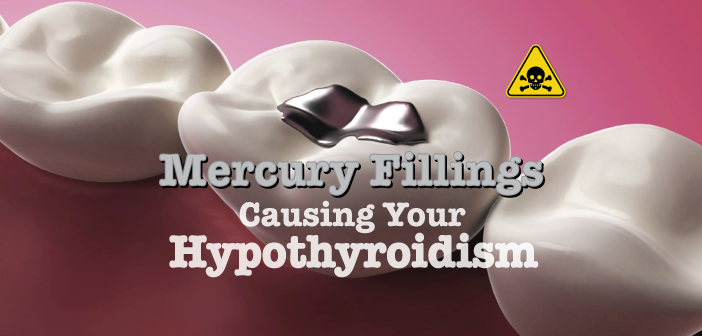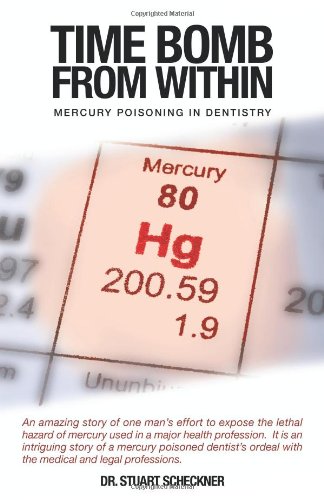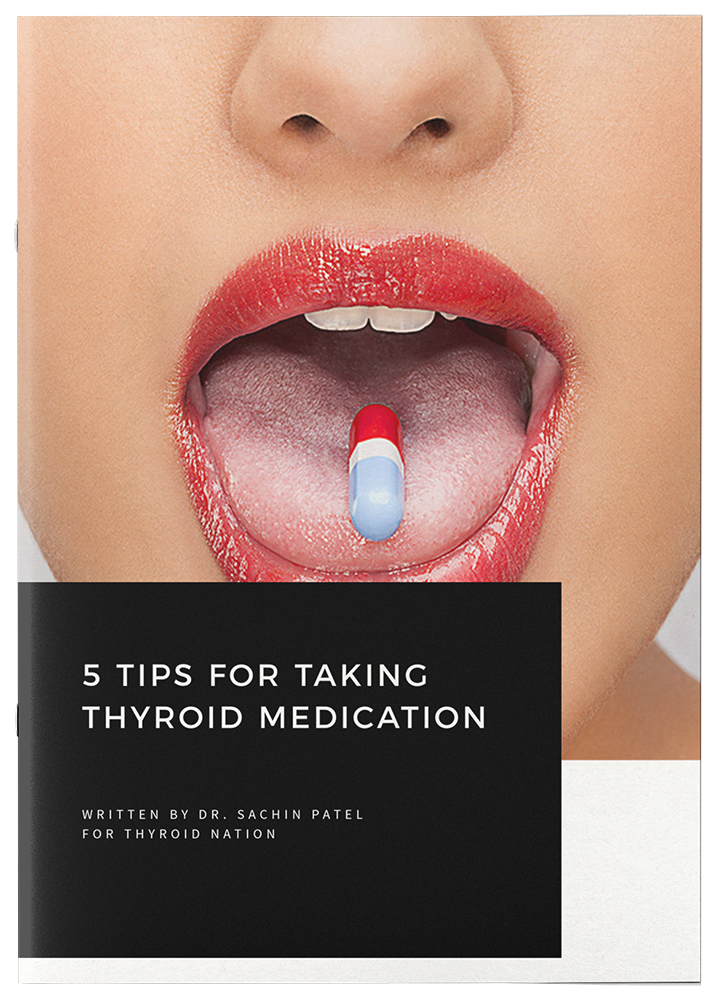
Rich Travis, Staff Writer Thyroid Nation
This is a very controversial subject. Much has been written, and lines in the sand have clearly been drawn, regarding mercury fillings. The American Dental Association, FDA and the National Institutes of Health stand firm that mercury fillings are safe and well within the acceptable levels allowed by the US government. They have said that once mercury is combined with the other substances in an amalgam filling, it becomes perfectly safe. While others, whole nations for that matter, have outright banned this use. Sweden and Norway have made the practice illegal, stating from a special investigation on mercury-related health issues:
With reference to the fact that mercury is a multi-potent toxin with effects on several levels of the biochemical dynamics of the cell, amalgam (mercury alloy) must be considered to be an unsuitable material for dental restoration.
This is incredibly ironic considering that this very same amalgam mixture that has been given to millions of people, and removed from millions of peoples’ mouths, must be handled, transported and disposed of as a “toxic substance”. Furthermore, the ADA itself has a “protocol” for safe handling of the amalgam mixture once it is prepared by a dentist or assistant. Additionally, did you know there is a specific “no-touch” method to handle it? Not to mention it has a preferred method of storage: in a sealed container, in an elemental room and underwater. Nonetheless, it has been deemed safe for our teeth and our overall health.
Endocrine Disruption, Mercury and Your Thyroid
Could it be that some people, with low thyroid function, hypothyroidism, may have mistakenly been given thyroid hormone to remedy a symptom caused by these amalgam fillings? When the safe removal of them could have alleviated many of the problems associated with the disease. Oral chelation formulas containing EDTA (ethylene-diamine tetra-acetic acid), a weak synthetic amino acid, are the best way to remove heavy metals, such as mercury. Chelating agents bind with heavy metals, and then carry them out of your body via urine and stool. EDTA supplements can also pull out much-needed magnesium, zinc, and calcium, so, it’s best to supplement these minerals as well, or take a quality multi-vitamin.
Other Chelating Supplements That Can Bind to the Free Mercury to Help Excrete It:
- Garlic (fresh garlic in food)
- Chlorella
- Selenium
- Vitamin C (fresh is best)
It is possible, as research—both new and old—shows that mercury plays a significant role in endocrine disruption and thyroid issues, that your mercury fillings could be the cause of your hypothyroidism. Symptoms such as low body temperatures, often improve rapidly when amalgam is removed. This is a sure sign that amalgam might have been one of the culprits, for example, of low thyroid function. According to Dr. David Kennedy, D.D.S.:
An average mercury amalgam filling releases approximately 10 micrograms of mercury daily into the body.
The significance of this is that mercury vapor is being immediately and continuously introduced into all of the most absorbent tissues of the body i.e., mouth, lungs and digestive tract. Consequently, mercury is continuously being deposited into the tissues and cells of the body. Mercury is the second most deadly poison known to man, after plutonium. The body recognizes this and immediately sequesters this mercury away in organs where it will do the least short-term damage. The primary storage sites are the brain, thyroid, liver and adrenals. Placing the mercury in these areas gets them out of the blood stream where immediate damage is then avoided. Unfortunately, the long-term affect is very troublesome, and much more difficult to relate to the mercury effect.
Symptoms That Can Be Caused by a Deficiency of Minerals, Displaced by Mercury Include:
- Iodine: thyroid dysfunction
- Magnesium: irregular heartbeat, receding gums
- Iron: anemia
- Zinc: anorexia, loss of taste and smell, loss of appetite, low libido, PMS
- Copper: anemia, thyroid dysfunction, impaired digestion
It is well-known to science that mercury is a very dangerous substance. So, to any thinking person, the inconsistency then, is obvious. If the ADA has known that this amalgam matter can be dangerous to the touch, then how can they explain their position that amalgam suddenly becomes perfectly safe once placed in the volatile environment of the human mouth? And, is even harmful and dangerous after removal?! It is also said that along with mercury fillings, the popular practice of including mercury in immunizations and medications, can also contribute to Hypothyroidism, or low thyroid function. Common sense doesn’t always stand up to scientific fact, but in this case, we already know that mercury is a toxin and poisonous to the human body, right?! So, while varying levels of safety are debatable, poison is poison. Again, why in the world would we ever want to put a substance that is a known toxin, inside our bodies, our mouths no less, when other materials are available? Very curious, indeed. Maybe, just maybe, it’s the fact that millions if not billions of dollars are at stake? Can you imagine the liability, from decades of dangerous mercury fillings that live in the mouths of millions of people? Conclusive, concrete and irrefutable evidence is hard to assemble because mercury poisoning can be a really slow process, years or even decades in the making. That’s why making a diagnosis of mercury poisoning due to dental work, is extremely laborious. Cross-over symptoms, such as those of autoimmune diseases, make mercury poisoning even more arduous to detect. Simply put, mercury poisoning has the same symptoms as many other diseases, including, but not limited to hypothyroidism.  Former dentist, Dr. Stuart Scheckner, now an advocate of the dangers of mercury fillings, has written a must-read book, Time Bomb from Within: Mercury Poisoning in Dentistry. He says,
Former dentist, Dr. Stuart Scheckner, now an advocate of the dangers of mercury fillings, has written a must-read book, Time Bomb from Within: Mercury Poisoning in Dentistry. He says,
Someday, future generations will look back on twentieth century dentistry and ask, “How could it be possible that people were having mercury, a deadly poison, implanted into their teeth?”
Dr. Scheckner goes on to share a terrifying tale of exposure, misdiagnoses, years of pain and anguish that culminated in his commitment to bring mercury toxicity to the attention of the public. Which leads us to Ken Presner. Ken struggled with hypothyroidism and, on his way to curing and healing himself, came to realize the horrific impact mercury was having on his health. He shares–
Mercury not only poisons the nervous system, digestive tract and circulatory system, it can also poison the glands including the thyroid gland. Here’s how I discovered the link between mercury and the thyroid. I lived in eastern Canada for many years. I was very sensitive to the cold and in the winter I always had to wear 2 hats, 2 pairs of gloves and 2 pairs of socks to stay warm. My body temperature was always below normal. I didn’t know it at the time but I was suffering from low thyroid activity, or hypothyroidism.
After I had my mercury fillings replaced with biocompatible plastic fillings in 1995, I did DMSA chelation for about six months. By the time I had finished the last course of DMSA my body temperature had miraculously returned to normal. This was no accident. I had always wondered why my temperature was only 96.5 to 97.5 degrees Fahrenheit. I did some research to find out why it had miraculously returned to normal.
I discovered that there are four iodine binding sites or receptors on the thyroid gland. These receptors bind with the iodine we get from our diet, mostly from iodized salt. The iodine enters the thyroid and activates it. If the thyroid is not absorbing enough iodine it will not be fully activated and the body’s temperature will be abnormally low.
Enter dental mercury. I discovered that mercury from dental fillings can migrate to the thyroid gland and can sit on one or more of the thyroid’s four iodine receptors blocking iodine from reaching the receptors thereby preventing full activation of the thyroid. Blocked by dental mercury iodine cannot be absorbed in normal amounts by the thyroid gland. The result is low body temperature or hypothyroidism.
Click here to read more about the Thyroid Connection by Ken Presner.
Other Common Sources Of Mercury Exposure?
Mercury exposure can come from a variety of sources and has a serious impact on thyroid function. Below, we’ve listed a number of ways you may also be exposed to mercury:
- Amalgam, Mercury fillings (a.k.a. “silver” fillings)
- Shellfish
- Tuna
- Grains treated with fungicides that contain methyl mercury
- Waterproof mascara
- Some hair dyes
- Preservatives found in some vaccines (Thimerosal)
- Hemorrhoidal medicines
- Yellow, vermillion and cinnabar paint pigments
- Mildew-resistant paints
- Gardening chemicals
- Fluorescent light bulbs
Establishing that mercury poisoning has indeed, disrupted your thyroid and endocrine system, is the first step to healing. Removing the mercury fillings carefully is next — making sure to exercise extreme caution (Find an expert who is trained in this process to avoid further exposure). Finally, managing your thyroid malfunction after toxic mercury is extracted. At this point, the body can start to heal, regenerate and thrive.
The devastating impact Mercury has on thyroid conditions is overwhelming and awareness is a very powerful tool. If you haven’t already, it is a good idea to get tested for heavy metal or Mercury Toxicity.
 Rich Travis is a staff writer for ThyroidNation.com. Living with his wife and 2 children, he has a front-row seat to the devastation thyroid disease can cause and offers an in-depth, up close and personal view of his experience. His wife of 17 years suffers from Hypothyroidism and was diagnosed with Hashimoto’s Thyroiditis and Adrenal Fatigue in 2012. Seeking help, offering compassion and supporting cures for those that suffer. Please follow him on Twitter, Pinterest and read more of his articles
Rich Travis is a staff writer for ThyroidNation.com. Living with his wife and 2 children, he has a front-row seat to the devastation thyroid disease can cause and offers an in-depth, up close and personal view of his experience. His wife of 17 years suffers from Hypothyroidism and was diagnosed with Hashimoto’s Thyroiditis and Adrenal Fatigue in 2012. Seeking help, offering compassion and supporting cures for those that suffer. Please follow him on Twitter, Pinterest and read more of his articles
Questions or anything to ask Travis about mercury? We want your thoughts in the comments section–Please!
Sources: Naturalnews.com DrFarid.com Zap.intergate.ca (Ken Presner) Wikipedia.org EvenBetterHealth.com Amalgamillness.com
// ]]>



